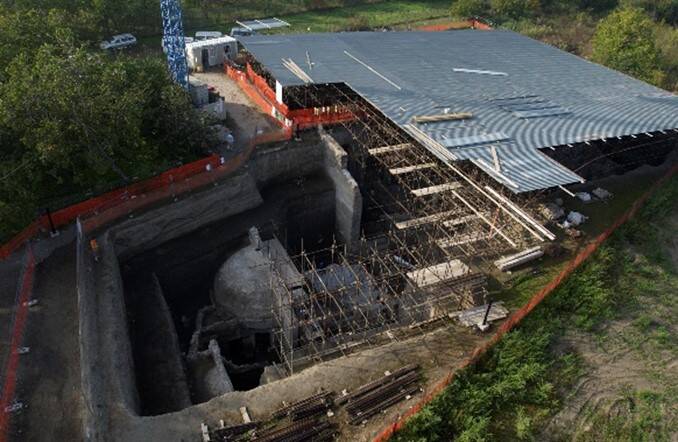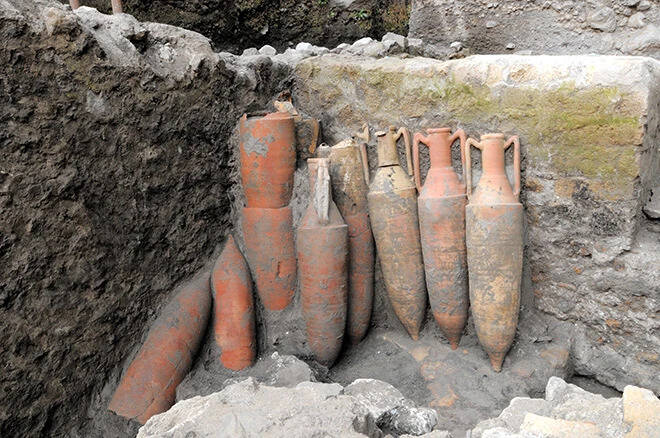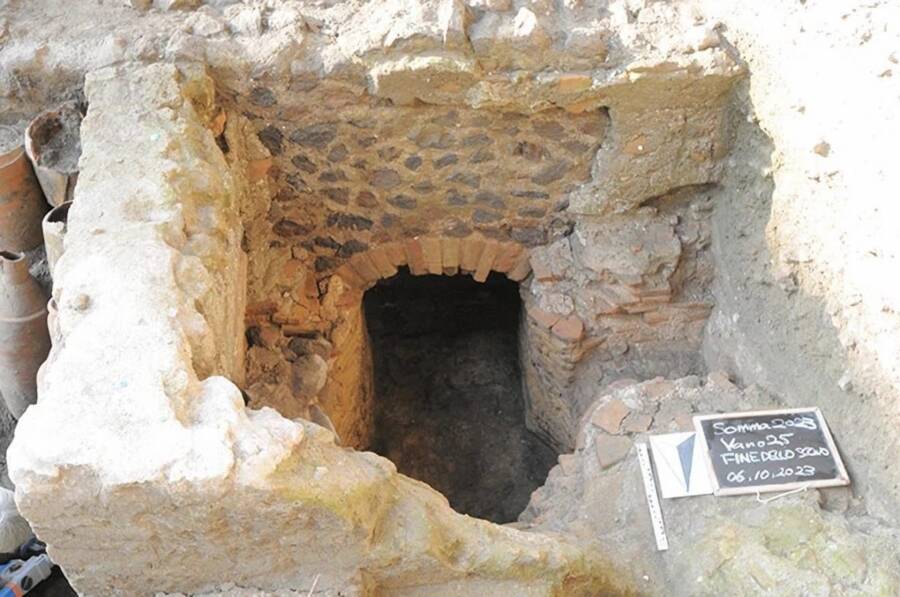The University of Tokyo believes that the excavation will not only enrich the historical record, but also reveal more information about how structures can better withstand natural disasters.

University of TokyoThe excavation site covered in protective roofing.
After twenty years of research, a team from the University of Tokyo believes they have discovered the lost villa of Roman Emperor Augustus.
Located to the north of Italy’s Mount Vesuvius, the 1st century C.E. villa ruins include pieces of wall, roof tiles, amphora pottery, and a furnace that may have been used to heat up a private bathhouse.
The villa had been buried in ash from the same 79 C.E. eruption that destroyed Pompeii. Now, researchers are hopeful that an analysis of the site will aid in their quest to better understand how infrastructure can withstand natural disasters, especially in volcanic and earthquake-prone Japan.
The University Of Tokyo Makes A Big Discovery

University of TokyoAmphora, tall Roman jars with long necks, lean against the villa’s walls.
In 2002, researchers from the University of Tokyo’s Earthquake Research Institute and Graduate School of Humanities and Sociology began excavating Somma Vesuviana, an archaeological site near Naples, Italy. The site sits to the north of Mount Vesuvius, the volcano responsible for the 79 C.E. eruption that buried Pompeii under ash.
One of the goals of the project was to collaborate with other nations to research volcanology and seismology. As a volcanic and earthquake-prone country, Japan wants to develop new technology that will better protect its infrastructure and population from natural disasters.
While digging beneath a 2nd century C.E. building previously discovered at the site, researchers recently uncovered evidence of an older villa.
The research team soon realized they had something exciting on their hands. According to historical sources, Rome’s first emperor Caesar Augustus died in 14 C.E. at his villa near Mount Vesuvius, but no one had ever identified its exact location. Now, we may have answers.
According to a press release from the University of Tokyo, the researchers have identified four rooms so far. One of the rooms was likely a warehouse, based on the Roman vases lining its walls.
Notably, they also excavated a chamber containing a furnace surrounded by large amounts of charcoal and ash. This furnace likely would have been used to heat a private bathhouse, indicating that the villa belonged to a person of great wealth and influence.
Carbon dating of the samples from the furnace area revealed the structure to be from the 1st century C.E.
After the 79 C.E. eruption, the villa was likely buried in ash. Afterward, the second villa was constructed on top of it, in part using materials taken from buildings destroyed in the eruption.
The 2nd century villa was likewise buried in ash during the 472 C.E. Mount Vesuvius eruption. Today, these layers of history allow researchers to analyze the lifestyles of Romans from different time periods.
What Happens Next?

University of TokyoRemains of the ancient furnace.
Now that researchers have dated the villa, they hope to positively identify it as the place where Emperor Augustus died.
“First, we will expand the excavation area, detect as many outlines of buildings buried in the eruption of 79 [C.E], and proceed with research to find out what kind of buildings they were, and what their functions and decorations were,” the press release detailed.
Given the presence of a furnace within the structure, researchers are hopeful that a bathing facility is buried nearby.
The research team also plans to study items damaged during the volcanic eruptions to get a better sense of how certain materials respond to volcanic pyroclastic flows.
“We will conduct excavation surveys from a disaster engineering perspective, including detecting beams and other wood, organic matter, and walls made of collapsed roof tiles, bricks, and stones, and recording them three-dimensionally,” the study stated.
Ultimately, the team is hoping their findings will provide greater insight into Roman history and disaster archaeology.
“We have finally reached this stage after 20 years,” said Masanori Aoyagi, one of the project leaders, according to Arkeonews. “This is a major development that will help us determine the damage caused to the northern side of Vesuvius and get a better overall idea of the eruption in 79.”
After reading about the possible discovery of Augustus’ villa, dive into the story of Villa Leopolda, one of the world’s most expensive villas. Then, explore whether Roman Emperor Caligula was as cruel and insane as many people believe.





